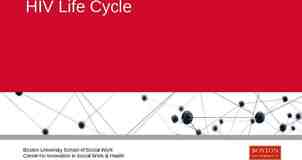VOLCAN O CASE STUDIES
20 Slides8.27 MB
VOLCAN O CASE STUDIES
1. Eyjafjallajökull, Iceland – 2010 (HIC) 2. Merapi, Indonesia – 2010 (LIC) 3. Nyiragongo, Democratic Republic of Congo – 2002 (LIC) 4. Kilauea, Hawaii – 2018 (HIC)
Mid Atlantic Ridge – divergent plate boundary North American and Eurasian plates moving apart at 25mm/year Iceland also lies above a ‘hotspot’ Eyjafjallajökull is in Iceland's Eastern Volcanic Zone 200km thick ice cap
Eruption began on 20 March 2010 – effusive fissure eruption in ice-free area of Fimmvörðuháls 14 April 2010 – site of eruption moved to the icecapped crater of Eyjafjallajökull and became explosive Heat from the rising magma melted the ice in the volcano’s crater. Cold meltwater infiltrated and chilled the magma causing it to shatter into very fine ash fragments. Ash and steam exploded out from the volcano as a huge 10km high plume.
Boaworm / CC by 3.0 Fissure eruption at Fimmvörðuháls Ash column after explosive eruption Explosive eruption at Eyjafjallajökull David Karnå / CC by 3.0
Volcanic Explosivity Index (VEI) of 4 0.27 km3 of airborne ash and rock fragments Northwesterly winds and stable weather system ash cloud spread over North Atlantic Ocean and Europe Ash is made from tiny abrasive fragments hazardous to aircraft European airspace was closed from 15-21 April. 107,000 flights were cancelled, airline industry lost 1.1 billion (International Air Transport Association) Many industries relying on air freighted products were badly affected shortages of imported fruits, flowers and electronic hardware
Eruption triggered several large glacial floods (jökulhlaups) on 14-15 April 700 evacuated River levels raised by 3m Agricultural land, roads, bridges and buildings damaged by flooding 800 people were evacuated via an automated telephone alert Volcanic sediment transported by the floods completely filled the lake at the foot of Gígjökull glacier with more than 17 million m3 of sediment.
GÍGJÖKULL LAKE Lake completely filled in with sediment after eruption in 2010 Lake at the foot of Gígjökull glacier in Summer 2008
MOUNT MERAPI, INDONESIA Sunda trench subduction zone, convergent boundary Australian plate forced beneath the Eurasian plate at 60-70 mm yr-1. Mount Merapi is a stratovolcano on the island of Java Eruptions of VEI 1-3 common 70,000 people live in close vicinity, 3 million in Yogyakarta 30km south
10:02 (UTC) 26 October 2010 Mount Merapi erupted, VEI 4 6 million m3 of rock from previous lava dome were blasted out 12km ash cloud, pyroclastic flows reached 8km from summit, new lava dome started to form 4 November 17km ash column additional pyroclastic flows Eruption had subsided by 30 November 2010 130 million m3 of new volcanic material (lava and ash) on Merapi’s slopes
Wikimedia/AusAID/Jeong Park Wikimedia/AusAID/Jeong Park
10km evacuation zone on 25 October Increased to 20km on 5 Nov 35 people, who refused to leave the village of Kinahrejo, were killed by pyroclastic flows on 26 Oct On 5 Nov 87 people were killed in village of Bronggang which had not yet been evacuated In total 367 fatalities and 400,000 had to be evacuated not able to return to their homes for 6 weeks.
House destroyed by pyroclastic flows in 2010 eruption Wikimedia/Crisco 1492/CC-By-3.0
Mount Nyiragongo is in the Democratic Republic of Congo Part of East African Rift Valley, a developing divergent plate boundary 15km north of the city of Goma 500,000 people Crater contains persistent lava lake The lava emitted in eruptions at Nyiragongo is often unusually fluid (nephelinite - very low SiO2 content).
Wikimedia/Caitjeenk/CC-By-3.0
Nyiragongo erupted on January 17, 2002 Difficult to monitor volcano due to political unrest 13km fissure opened up on the south side of the volcano Lava flows reached speeds of 60km/hr in the direction of Goma and Lake Kivo 14-34 million m3 of lava Eruption of lava stopped after 12 hours but lava continued to flow towards and into Lake Kivo for a 3 days 45 fatalities in first 24 hours due to lava flows and CO 2 asphyxiation
Lava flows covered 15% of Goma 2 hospitals, 14 villages, over 4,500 buildings and part of Goma’s international airport runway were destroyed by lava flows 120,000 people left homeless 350,000 people fled eastwards to Rwanda to escape the lava flows Cholera break out in camps from lack of clean drinking water and sanitation Lava flows set alight a petrol station on 21 January. 50 people were in the petrol station trying to siphon off fuel and died in the explosion. Total fatalities 147
Lava covering airport runway Shelters in Kanyaruchinya camp Steven van Damme/Oxfam/CC BY 2.0
KILAUEA HAWAII, USA

























